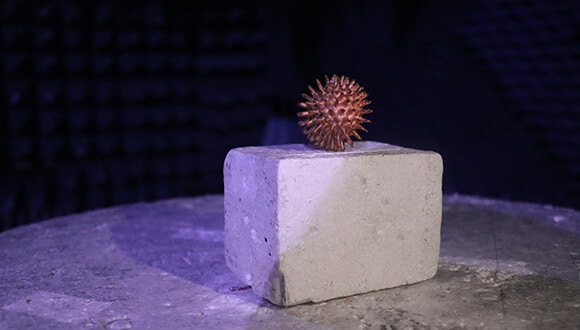The new development will make it possible to disperse a cloud of electromagnetic radiation that will hide the aircraft

Researchers from Tel Aviv University have developed a tiny tool inspired by the corona virus, which effectively disperses electromagnetic radiation. It is a small ball with an array of spikes that is very similar in shape to the corona virus. It is printed with a XNUMXD plastic printer and covered with copper, and disperses radiation so efficiently that one small structure can disrupt radar activity and hide an aircraft. The development is based on multidisciplinary technologies involving XNUMXD printing, thin layers, artificial intelligence and topological optimization, alongside basic radar principles. According to the researchers, the development could help in the security and intelligence sector to avoid radar locations and even in various satellite uses. For example, communication challenges can be solved with femto-satellites that cannot carry a large antenna.
How do you fly a plane?
Chaff is a means of deceiving a radar whose function is to hide a real target by creating a cloud that scatters electromagnetic radiation. An aircraft or vessel scatters a large amount of metal fibers and produces a dummy target. Since an airplane is a large target, a huge amount of fiber is required which limits the use of the method. The researchers tried to solve this problem in their study. The research was carried out in the laboratory of Prof. Pavel Ginzburg From the Ivy and Alder Fleishman Faculty of Engineering and funded by the American Navy.
"The new technology they developed has many applications," explains Prof. Ginzburg. "Our specialty is smart electromagnetic structures for wireless communication. A smart mop is one of the contemporary challenges in the field of security. This is partially due to advances in radar systems and various reasons that the general public does not know. In our laboratory, we received a request from the US Department of Defense to conduct research on the subject because we hold a world record for superdispersion. Approaches that incorporate artificial intelligence allow us to obtain super-performance that probably cannot be obtained otherwise."
According to Prof. Ginburg, the radar technologies are developing very quickly and it is possible to take them to different applications. "I personally tend to think about problems that may appear in the near future, such as tracking drones that in a few years will appear in many places, such as cities, for delivery purposes. In this case we will have to develop effective surveillance systems and the radar here has many advantages including reliability, efficiency and low price. The drone has a small radar signature, so it is useful to develop methods to increase it and thus help the radar in detection. The current development is another leap forward as the structure is film wide and completely directional. Our next step will be to make the radar think that a static target is moving and approaching, even though it is not. Does this contradict the theory of relativity? The short answer is 'no, everything is fine', but that will probably be a topic for the next conversation", he concludes with a smile.
More of the topic in Hayadan:
